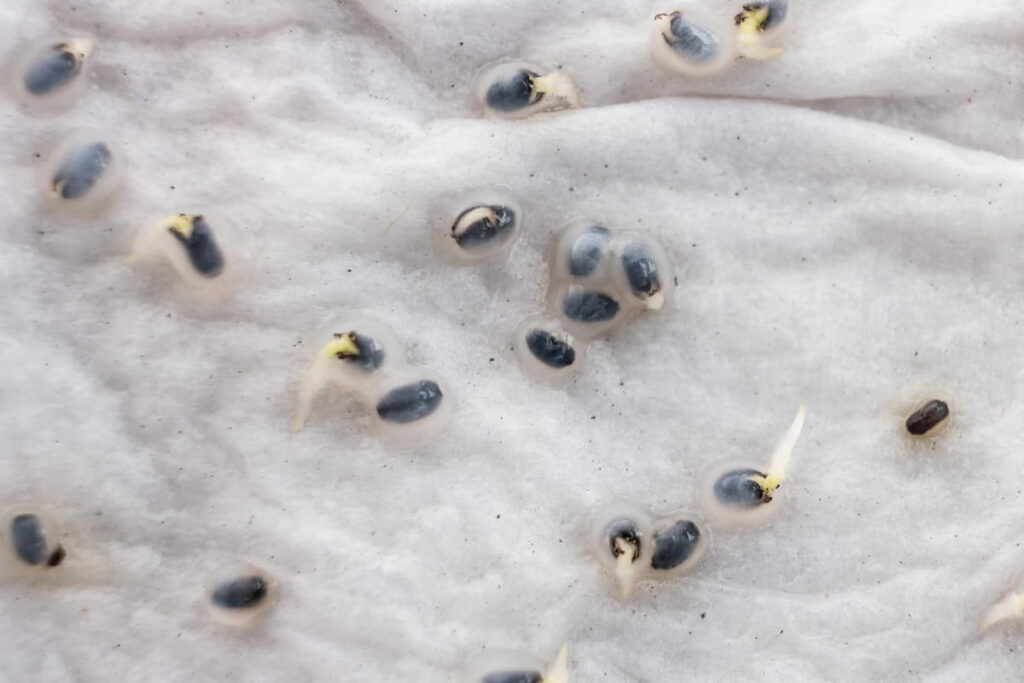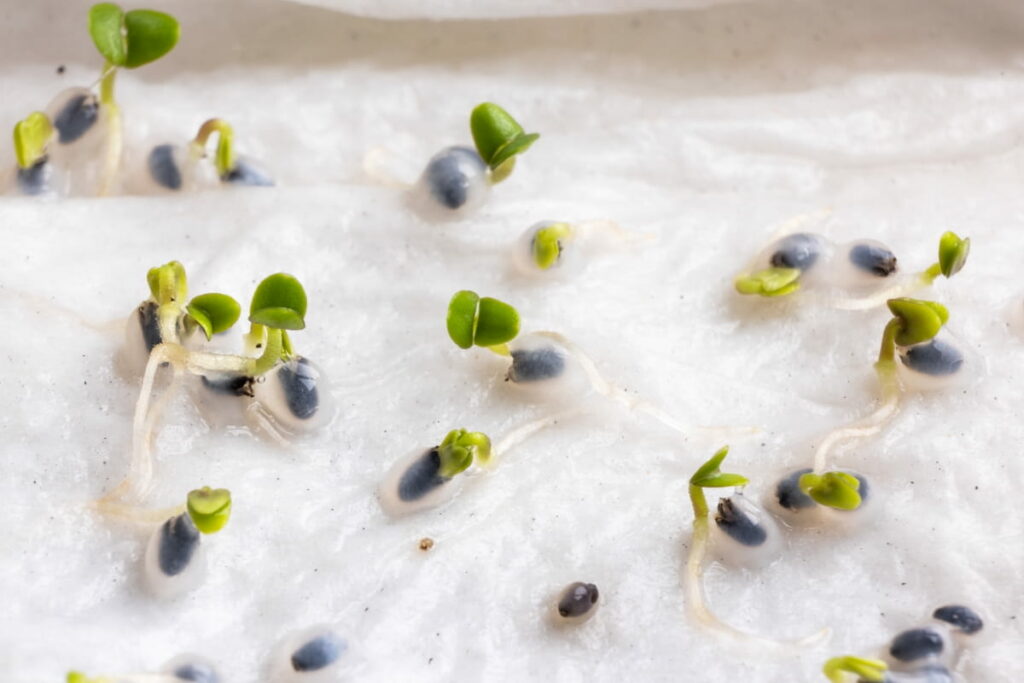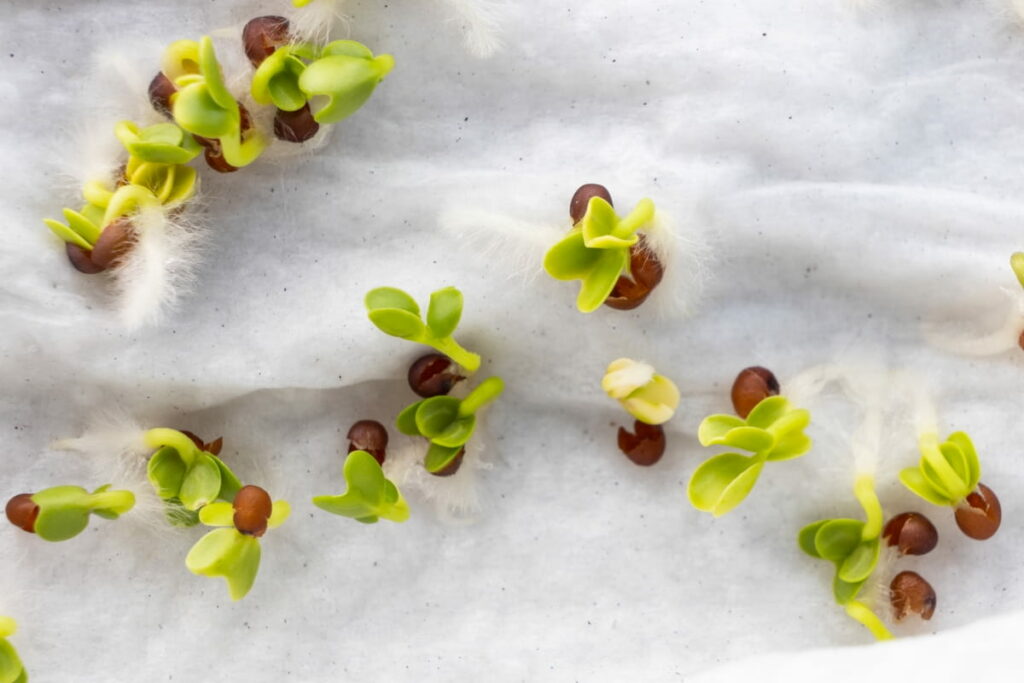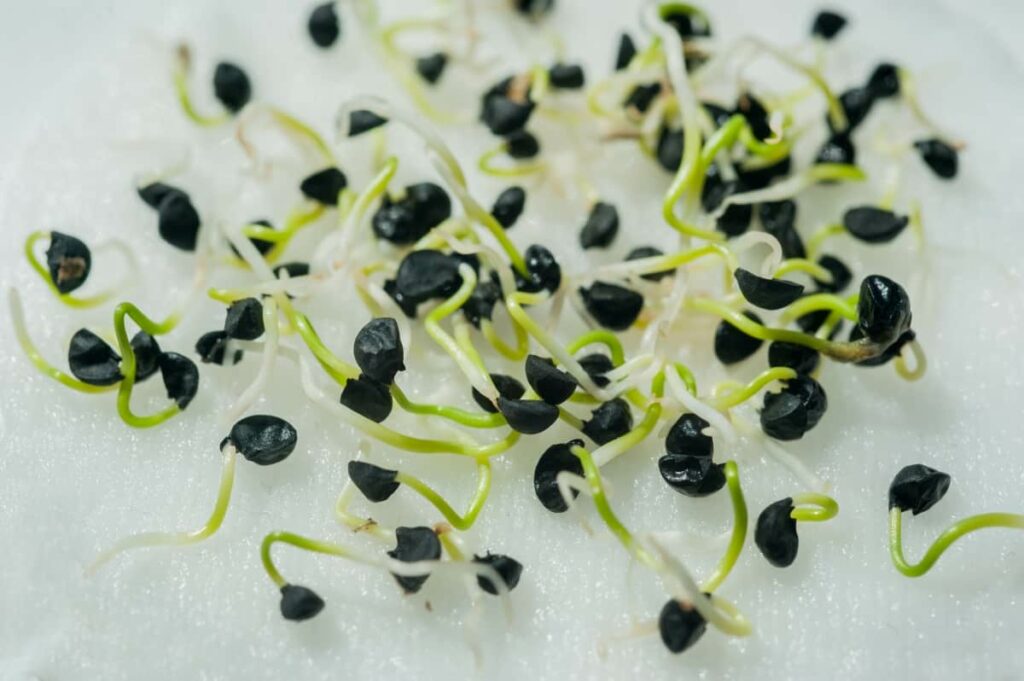Seed germination is the method by which a seed develops into a new plant. It involves the activation of the seed’s metabolic machinery, leading to the emergence of a young seedling.
Benefits of Paper Towel Germination
Paper towel germination offers several advantages, including a controlled environment for seedling growth, easy observation of germination progress, and minimal risk of soil-borne diseases. Additionally, it allows for precise monitoring of moisture levels, promoting successful germination.
Types of Seeds Suitable for Paper Towel Germination
Many types of seeds are suitable for paper towel germination, including small seeds like lettuce, tomato, and basil, as well as larger seeds such as beans and peas are the best seeds for paper towel germination. Seeds with hard coatings or those that require stratification may also benefit from this method, as it can help initiate the germination process more quickly and efficiently.

How to Successfully Germinate Seeds in a Paper Towel
Materials Needed
List of Supplies
- Seeds
- Paper towels
- Plastic zipper bags
- Water spray bottle
Preparing Your Workspace
- Choose a Clean Surface: For indoor seed germination with a paper towel, select a clean and flat surface to work on, such as a kitchen counter or table.
- Gather Supplies: Organize all materials needed within easy reach to streamline the process.
- Ensure Proper Lighting: Place your workspace near a natural light source or provide artificial light to aid in germination.
Seed Preparation
Selecting Healthy Seeds
For the paper towel method for sprouting seeds, choose seeds from reputable sources, ensuring they are viable and disease-free. Opt for seeds that are plump, firm, and free from cracks or damage. Before germinating seeds in a paper towel, ensure they are clean and dry. Remove any debris or damaged seeds.
Pre-Soaking Seeds (If Necessary)
Some seeds benefit from pre-soaking to soften their outer shells, aiding in germination. Place seeds in room temperature water for a few hours or overnight, depending on the seed type. However, not all seeds require pre-germinating seeds with a paper towel, so research specific requirements for the seeds you’re germinating for quick seed germination with a paper towel.
Setting Up the Paper Towel
Wetting the Paper Towel
- Choose a clean, damp paper towel. Lay it on a clean, flat surface, ensuring it’s large enough to accommodate the seeds without overcrowding.
- Use a spray bottle to water over the paper towel until it’s thoroughly moistened but not dripping. Ensure uniform dampness across the entire surface.
Folding Techniques for Optimal Moisture
- Fold the other half over the seeds, creating a neat packet. This helps in maintaining consistent moisture around the seeds.
- Avoid excessive pressure to prevent damaging the seeds.
- Seal the edges to maintain moisture and prevent drying out.
- Place the paper towel with seeds in a clear plastic bag or container with a lid to retain moisture.
- Regularly check to ensure the paper towel remains moist but not waterlogged, and monitor seed germination progress.
Placing the Seeds
Spacing Seeds on the Paper Towel
Select high-quality seeds suited for germination. Ensure they are fresh and viable for better success rates. Lay the moist paper towel flat on a clean surface. Space out the seeds evenly across the towel, ensuring they don’t touch each other.
Covering Seeds with Another Wet Paper Towel
For growing plants from seeds in a paper towel, gently place another wet paper towel over the seeds, ensuring it completely covers them. Press lightly for good contact between the seeds and the moist paper towel. Regularly check the paper towels are moist but not waterlogged. Add water as needed to maintain optimal moisture levels for germination.
In case you missed it: How to Plant Guava Seeds: Germinating Guava Seed in Pot

Creating a Humid Environment
Using Plastic Bags or Containers
- Transfer the paper towel with seeds into a sealable plastic bag or container.
- Leave some air space in the bag to prevent the suffocation of seeds.
- Seal the bag/container to maintain moisture levels.
Ensuring Adequate Airflow
- Regularly check the seeds for germination.
- If condensation builds up inside the bag/container, open it briefly to let fresh air in.
- Re-moisten the paper towel if it starts to dry out.
Optimal Germination Conditions
Temperature Requirements
Most seeds germinate best at temperatures between 21-29°C. Maintain consistent warmth to encourage a successful seed germination process using a paper towel.
Light vs. Darkness for Germination
Some seeds require light for germination, whereas others need darkness. Research the specific requirements of the seeds you’re germinating. Generally, cover light-sensitive seeds with an additional layer of paper towel or place them in a dark environment. Conversely, light-loving seeds should be exposed to a source of gentle light.
Monitoring and Maintenance
Checking Moisture Levels
Regularly check the paper towel to ensure it remains moist. Avoid letting it dry completely, as this may hinder germination. Place the towel in a warm, well-lit area, but avoid direct sunlight. Lightly mist the paper towel if it begins to dry out. Ensure it remains moist but not waterlogged.
Watching for Mold or Fungus
Vigilantly monitor the seeds for any signs of mold or fungus, which can impede germination. If detected, address the issue promptly by adjusting moisture levels and ventilation.
Recognizing Germinated Seeds
Identifying Successful Sprouts
Germinated seeds can be identified by the appearance of small, white roots protruding from the seeds. Some seeds may also show tiny green shoots emerging from the seed casing. Successful sprouts will exhibit strong, healthy growth with vibrant green coloration. They will continue to grow longer roots and develop sturdy stems and leaves.
Troubleshooting Common Issues
- Mold or Fungus: If mold or fungus appears on the paper towel, it’s a sign of excessive moisture. Remove the affected seeds and adjust the moisture levels by using less water in the paper towel.
- Lack of Germination: If seeds fail to germinate after a week or more, they may be old or of poor quality. Try using fresh seeds or adjusting the conditions, such as providing more warmth or moisture.
- Damping Off: This occurs when seedlings rot at the base of the stem. Ensure good air circulation as well as avoid overwatering to prevent damping off.
In case you missed it: Seed Germination Chart in India: Duration and Temperature for Fruits, Vegetables, Flowers, and Herbs

Transplanting Sprouted Seeds
Preparing the Soil or Growing Medium
Before transplanting sprouted seeds, ensure the soil or growing medium is ready to receive them. Choose a well-draining potting mix or soil that is light, airy, and free from pathogens. Prepare the containers or trays by filling them with the growing medium, leaving some space at the top for the seeds and seedlings.
Gentle Handling of Tender Sprouts
Handle the tender sprouts with care to avoid causing any damage. Hold the seedlings instead of their leaves rather than the stems, as the stems are fragile and can easily break. Avoid touching the roots as much as possible, as any damage to the roots can hinder the seedling’s growth. After transplanting, water the seedlings gently to settle the soil around the roots.
Aftercare for Transplanted Seedlings
Watering and Feeding
Water the soil lightly to keep it moist but not waterlogged. Overwatering leads to damping off, a fungal disease that can kill seedlings. For feeding, seedlings don’t require fertilizer immediately after germination since they have stored energy from the seed. However, after a few weeks, you can start feeding them with a diluted, balanced liquid fertilizer to provide essential nutrients for growth.
Adjusting Light and Temperature
Place the seedlings in a spot where they can receive adequate light. A sunny windowsill or under grow lights are suitable options. If using artificial lights, aim for 12-16 hours of light per day to simulate natural daylight. Most seedlings thrive in temperatures between 18-24°C. Avoid placing them in drafty areas or near heat sources that cause fluctuations in temperature.
In case you missed it: How to Germinate Seeds: Techniques for Faster Germination of Vegetables, Flowers, Fruits, and Herbs

Conclusion
By following these steps in the paper towel seed starting guide, you’ve initiated the journey of germinating seeds in a paper towel. Remember to continue providing appropriate care, including adequate light, water, and nutrients, to ensure the healthy growth of your plants. Happy gardening, and may your green thumb flourish as your plants thrive!
- Crops Grown in Summer Season: Best Choices for Summer Gardening
- Organic Pest Control for Tomato Farming
- How to Maximize Sheep Farming Profit
- Broccoli Varieties: Choosing the Right Cultivars for Your Farm
- How to Raise Pigs in Your Own Backyard: A Comprehensive Guide
- Budget Friendly Sheep Shed Ideas: Cheap and Low-Cost Tips
- How Much Do Cattle Farmers Make: Revenue Streams in Cattle Farming
- Management Pests and Diseases in Your Cotton Field
- Sheep Farming Business Plan for Beginners
